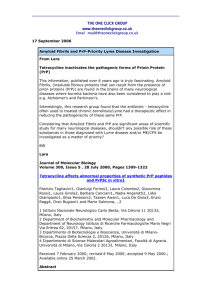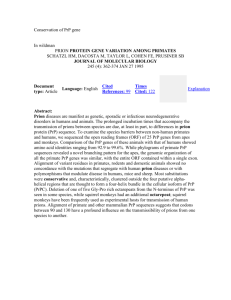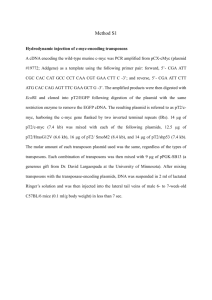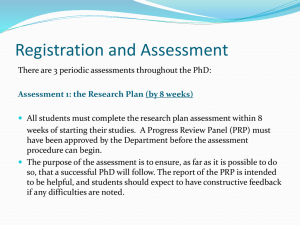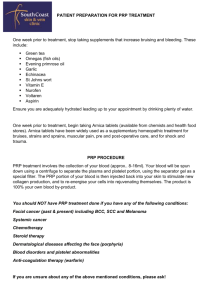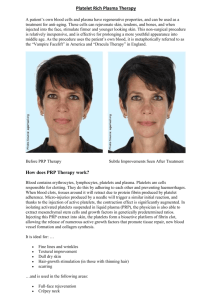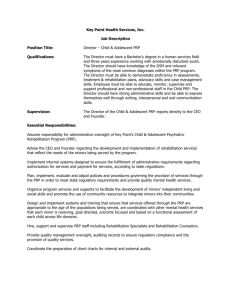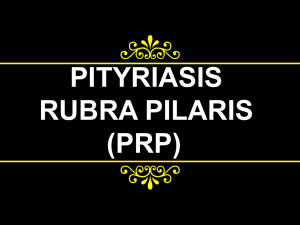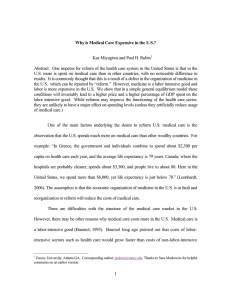PROT_22341_sm_suppinfo
advertisement
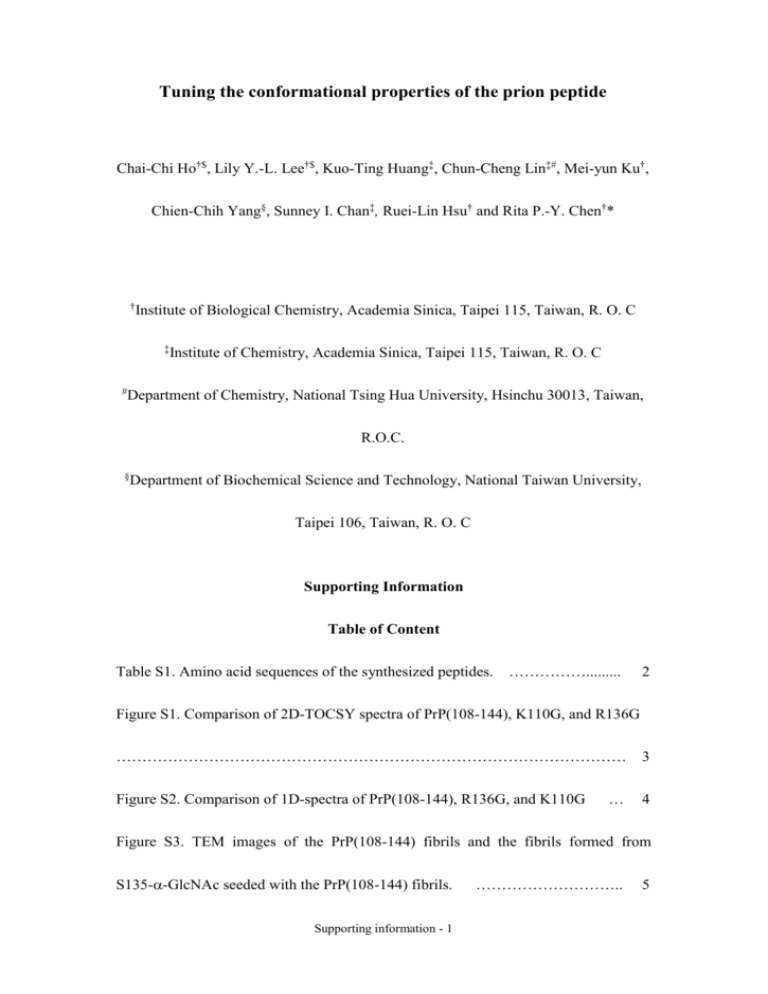
Tuning the conformational properties of the prion peptide Chai-Chi Ho†$, Lily Y.-L. Lee†$, Kuo-Ting Huang‡, Chun-Cheng Lin‡#, Mei-yun Ku†, Chien-Chih Yang§, Sunney I. Chan‡, Ruei-Lin Hsu† and Rita P.-Y. Chen†* † Institute of Biological Chemistry, Academia Sinica, Taipei 115, Taiwan, R. O. C ‡ # Institute of Chemistry, Academia Sinica, Taipei 115, Taiwan, R. O. C Department of Chemistry, National Tsing Hua University, Hsinchu 30013, Taiwan, R.O.C. § Department of Biochemical Science and Technology, National Taiwan University, Taipei 106, Taiwan, R. O. C Supporting Information Table of Content Table S1. Amino acid sequences of the synthesized peptides. ……………......... 2 Figure S1. Comparison of 2D-TOCSY spectra of PrP(108-144), K110G, and R136G ……………………………………………………………………………………… 3 Figure S2. Comparison of 1D-spectra of PrP(108-144), R136G, and K110G 4 … Figure S3. TEM images of the PrP(108-144) fibrils and the fibrils formed from S135--GlcNAc seeded with the PrP(108-144) fibrils. Supporting information - 1 ……………………….. 5 Table S1. Amino acid sequence of the synthesized peptides. The difference from the wildtype peptide is highlighted in red. Name Sequence PrP(108-144) Ac-NMKHMAGAAAAGAVVGGLGGYMLGSAMSRPMMHFGND-NH2 S135--GalNAc Ac-NMKHMAGAAAAGAVVGGLGGYMLGSAMS*RPMMHFGND-NH2 S135--GlcNAc Ac-NMKHMAGAAAAGAVVGGLGGYMLGSAMS*RPMMHFGND-NH2 S135--GalNAc Ac-NMKHMAGAAAAGAVVGGLGGYMLGSAMS*RPMMHFGND-NH2 S135--GlcNAc Ac-NMKHMAGAAAAGAVVGGLGGYMLGSAMS*RPMMHFGND-NH2 R136G Ac-NMKHMAGAAAAGAVVGGLGGYMLGSAMSGPMMHFGND-NH2 K110G Ac-NMGHMAGAAAAGAVVGGLGGYMLGSAMSRPMMHFGND-NH2 R136/ S135--GalNAc Ac-NMKHMAGAAAAGAVVGGLGGYMLGSAMS*GPMMHFGND-NH2 * glycosylated site Supporting information - 2 Figure S1. Comparison of 2D-TOCSY of PrP(108-144), K110G, and R136G. Peptides were dissolved in 20 mM H3PO4 and 10 % D2O to a final concentration of 1mM. A 1/100 volume of sodium 3-(trimethylsilyl)-propionic-2, 2, 3, 3-d4 acid solution (0.75 % in D2O) was added as an internal reference. An 80 millisecond mixing time was used to record 2D-TOCSY on a Bruker AVANCE 600 AV NMR spectrometer at 298K. The H versus H crosspeaks of K110 do not show in the spectrum of K110G due to K110→G mutation. The intra-residue crosspeaks of M109 and H111 are also affected by the K110G mutation. The H versus H crosspeaks of R136 do not show in the spectrum of R136G due to R136→G mutation. R136G is prone to associate and hence the crosspeak intensity of its spectrum is weaker than those of the other two peptides. Supporting information - 3 Figure S2. Comparison of 1D-spectra of PrP(108-144), K110G, and R136G. Peptides were dissolved in 20 mM H3PO4 and 10 % D2O to a final concentration of 1mM. A 1/100 volume of sodium 3-(trimethylsilyl)-propionic-2, 2, 3, 3-d4 acid solution (0.75 % in D2O) was added as an internal reference. The spectra were recorded on a Bruker AVANCE 600 AV NMR spectrometer at 298K. Supporting information - 4 Figure S3. TEM images of the PrP(108-144) fibrils and the fibrils formed from S135--GlcNAc seeded with the PrP(108-144) fibrils. The images were recorded in a Tecnai G2 Spirit TWIN electron microscope (FEI Company). The corresponding length of scale bar is shown in each figure. Supporting information - 5

